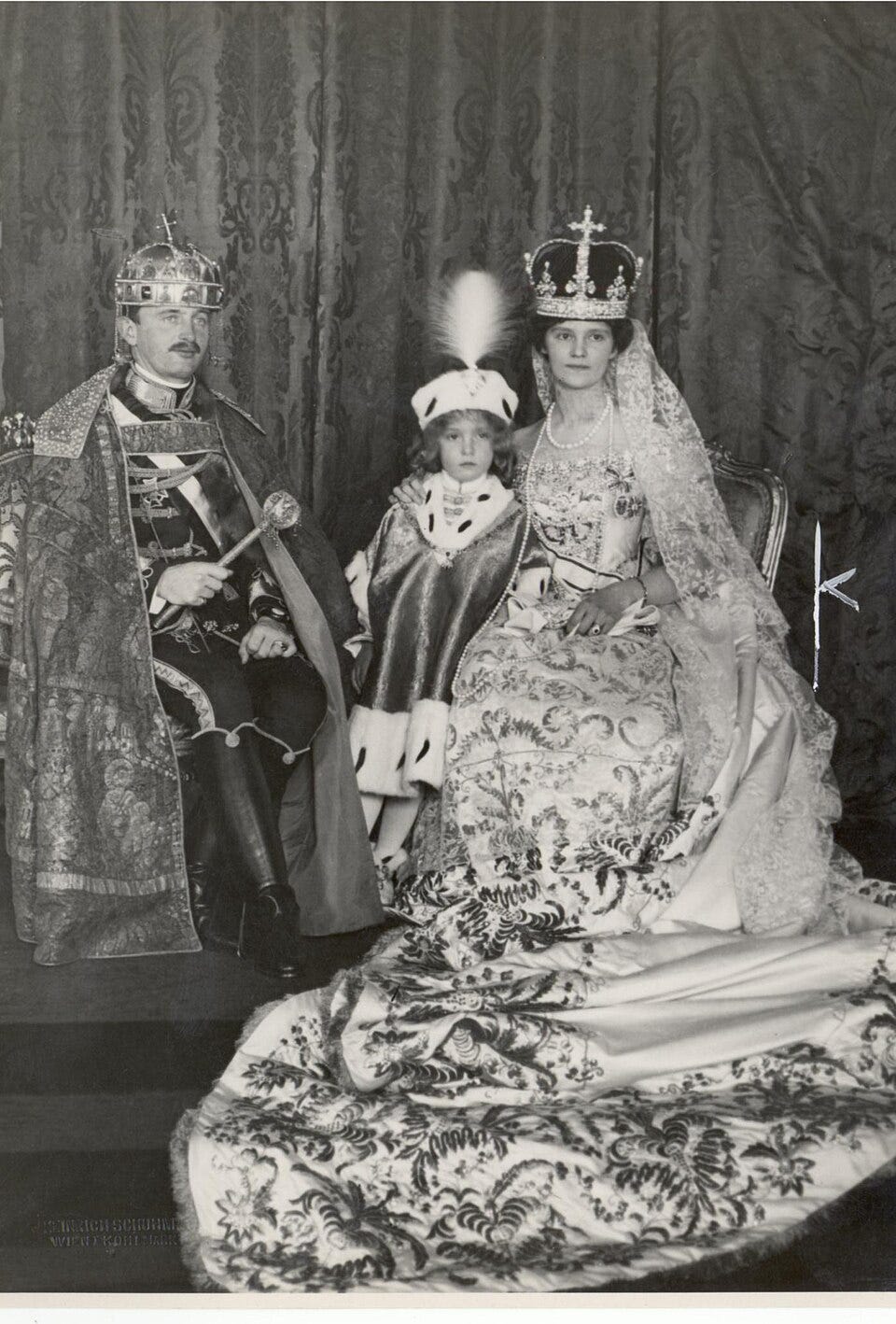A small suitcase: this was the container that protected the Habsburg jewels as Empress Zita fled across Europe, and later the Atlantic, toward Canada.
Two male members of the family reportedly revealed the jewels’ whereabouts only in 2022, one hundred years after the death of Austria’s last emperor, Charles I.
The news comes just weeks after the spectacular theft of Empress Eugénie’s jewels from the Louvre.
The Austrian treasures, however, were not stolen — they had simply vanished.
From Vienna to Exile
In November 1918, after the defeat in the First World War, the Austro-Hungarian Empire was collapsing.
Charles I ordered his chamberlain to secure the family’s treasure: the jewels reached Switzerland, but within three years they had disappeared.
No official trace, only speculation: a theft, perhaps a slow sale, diamond by diamond. Or maybe a pledge to finance the emperor’s failed attempt to reclaim the Hungarian throne.
The truth now seems now more straightforward. Empress Zita had carried them with her on her journeys across three continents.
No shadowy brokers or political intrigues, just a woman protecting what was left of a dynasty.
Coronation of King Charles IV and Queen Zita, with crown prince Otto, in Budapest (1916)
The Map of a Vanished Europe
Zita’s itinerary mirrors an entire continent reshaping itself.
Hungary, Switzerland, Hungary again. After the failed restoration, came the exile in Madeira, where Charles died of pneumonia at thirty-four.
Then the Basque Country, eleven years in Belgium, the Nazi invasion of 1940, the flight through France toward the Spanish frontier, then Portugal. The visa for the United States arrived here, when Europe was in the midst of another world war.
Final destination: Quebec.
With her, that same small suitcase.
The Florentine Diamond
Among the recovered pieces is the so-called Florentine Diamond, a 137-carat yellow stone that has crossed five centuries, changing hands at every turn of history.
Legend says it once belonged to Charles the Bold, Duke of Burgundy, who carried it when he fell at the battle of Nancy (1477).
It later passed to the Medici in Florence, then to Francis Stephen of Lorraine.
When he married Maria Theresa of Austria, the diamond entered the Habsburg patrimony.
Francis Stephen had it set into the imperial crown in 1745.
Nearly two centuries later, Charles I sent it to Switzerland for safekeeping, and in 1921 it vanished.
Rumors and Reappearances
Theories multiplied over the decades.
In 1923, a 99-carat yellow diamond surfaced on the American market, thought by some to be the cut-down Florentine.
In 1966, a Swiss jeweler claimed that Habsburg jewels had been offered to him, many already dismantled.
In 1981, Christie’s auctioned another yellow stone (82 carats this time) again suspected to be a fragment of the legendary diamond.
But, in reality, it had never left.
It had been there all along, intact, inside a Canadian bank vault.
The Secrets of the Vaults
What will happen now to the recovered treasure remains to be seen; an international dispute seems inevitable.
The story brings to mind another rediscovery: the presumed portrait of Isabella d’Este by Leonardo da Vinci, which resurfaced in 2013 in the vault of a Swiss bank, sparking an international legal battle.
Same pattern: disappearance, oblivion, and an unexpected reappearance in a far-off vault.
Vaults, it seems, hold more than we ever admit to having lost.
Sources
Article by Der Spiegel: The Priceless Habsburg Jewels Are Found - In a Canadian Safe Deposit Box
Article by The New York Times: The Florentine Diamond Resurfaces After 100 Years in Hiding
More on the long, long history of the Florentine Diamond on Wikipedia





Fascinating story!